Foodservice is one of the largest markets in Brazil, with 2018 revenues estimated at R$ 230 billion by Brazilian foodservice monitor CREST®. However, it was also one of the markets that suffered most from the lockdown resulting from the pandemic.
According to a study carried out by Food Consulting in partnership with SebraeThe turnover in April 2020 was only 25% of what was obtained in the same period in 2019. Paulo Solmucci, president of the Brazilian Association of Bars and Restaurants (ABRASEL), says that 25% of gastronomy businesses will not be able to resume their activities after reopening.
For this reason, the reopening is necessary, but it must be done with extreme caution, preventing these spaces from becoming major vectors of the disease.
Evaluate Your Reopening Costs
Returning activities to the physical space means a possible increase in turnover, but without proper evaluation, this can increase losses.
Restaurants and the like have to reduce the number of tables in the hall when they reopen in order to avoid crowds. However, the cost of operation remains much the same as before: staff remain, as do the fixed bills for gas, energy and water.
Furthermore, a certain amount of resistance is expected from customers after the reopening. In addition to having less purchasing power to invest in meals away from home, many will not feel comfortable going back to public places. Consequently, the reopening will not be favorable for everyone and an analysis will have to be made of the local scenario and the business's ability to survive this moment.
In some cases, investing in delivery logistics can be more interesting than resuming activities immediately.
Adapting the Architecture for Delivery
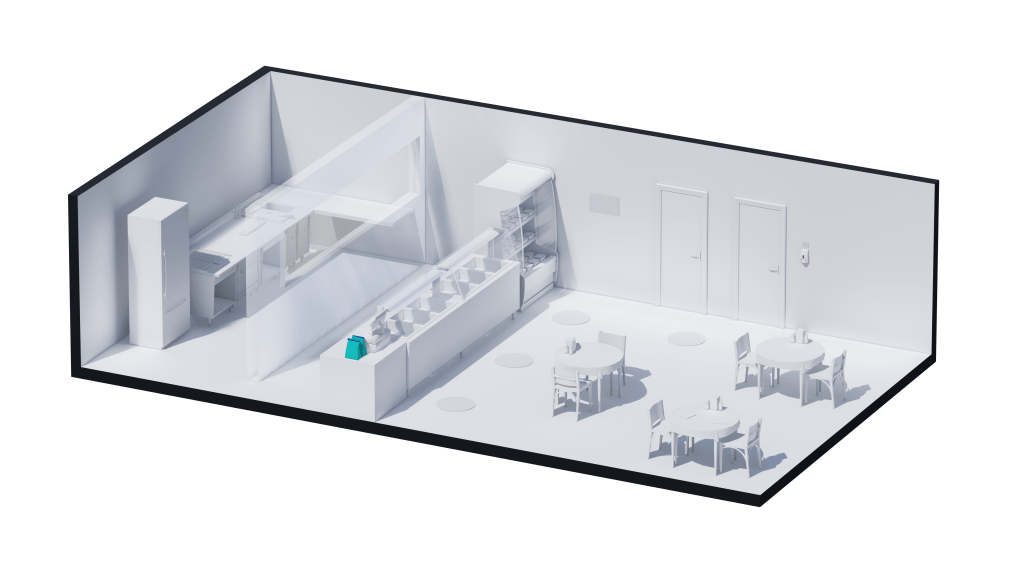
In principle, some of the habits acquired during the quarantine period have already been internalized and will not be changed. One of these is delivery. Users who are used to it have started using it even more, and those who had never used it have become familiar with the service.
While restaurants are closed, it's easy to deal with the volume of goods leaving the space. However, once they reopen, special care must be taken to ensure that the flow of dishes and deliveries leaving the premises does not interfere with the end customer's experience or become a critical point of contamination.
If possible, the ideal solution is to create a specific goods outlet for the delivery system that does not pass through the salon.
Creating a circulation in which the goods go directly from the kitchen to the waiting area for the delivery men avoids conflicting crowds when customers enter the premises. What's more, with the dishes passing through fewer places and with fewer hands, the chance of any kind of contamination is reduced.
Finally, whenever possible, provide comfortable and caring spaces for delivery workers. Without a doubt, delivery professionals have been responsible for keeping many gastronomy businesses afloat and little is offered to this class.
So a good waiting area with a place to sit, drink water and use the restroom is a necessary solution for those who can afford it.
Layout Adaptation and Furniture Readjustment in Foodservice with Buffet System
There's a lot of talk about the "New Normal", but countries that have already reopened it have shown us that the general behavior of the population has changed very little.
In this sense, the main focus should now be on the perception of cleanliness. The visible and tangible sensation of hygiene brings reliability on the part of customers and encourages purchases. In this respect, some business models will need to adapt more, especially buffets.
The buffet system, as is most common in Brazil, has always presented serious contamination problems. Typically, foodservice with this system has bilateral islands with no barriers between the food and the customer's handling.
It is expected that new official regulations will soon be determined by the health authorities. However, all the signs point to one main change: the customer no longer handles the food.
For reopening, the most practical adaptation is to renovate the furniture. Close off direct access between the customer and the food and have a properly dressed and hygienically oriented employee in charge of serving the portions. The famous "trayão" system.

Another possible adaptation is to offer individually packaged single portions in hot or cold display cases for people to put together their own menu.
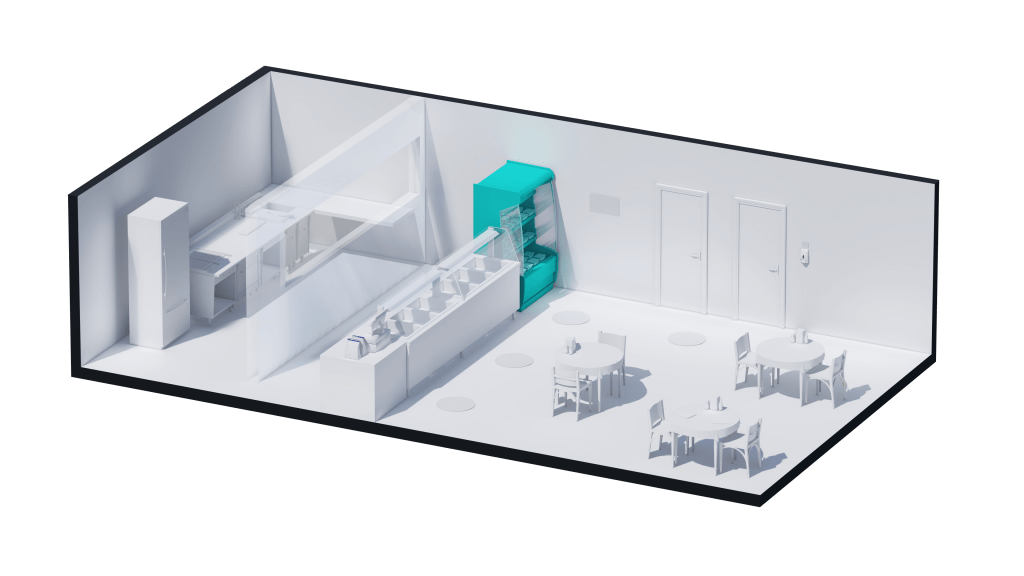
Critical Points for Investing in Low Touch
Acrylic between tables? Private areas? So far, nothing indicates a major behavioral change on the part of society that would require such drastic changes in the layout of restaurants.
Some points, however, are worth investing in because they are critical contamination points and improve the general perception of hygiene.
Doorknobs are touch points for practically all employees and customers, and are easy to contaminate.
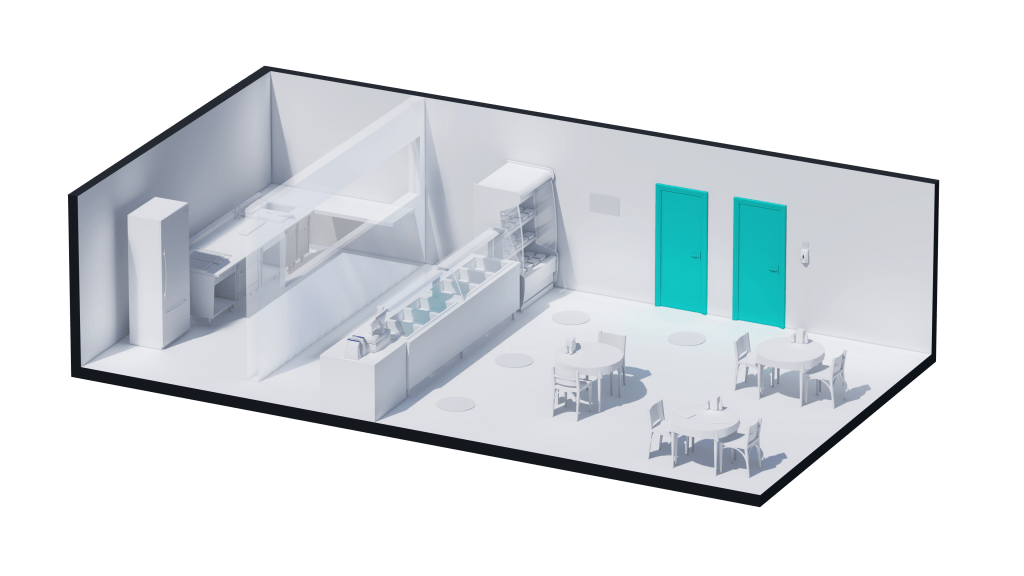
A simple solution is the forearm handle, which avoids manual contact. The company Materialise has not only developed a model, but has also made a model of this handle available free of charge. The file is for 3D printing and can be found on the company's website.
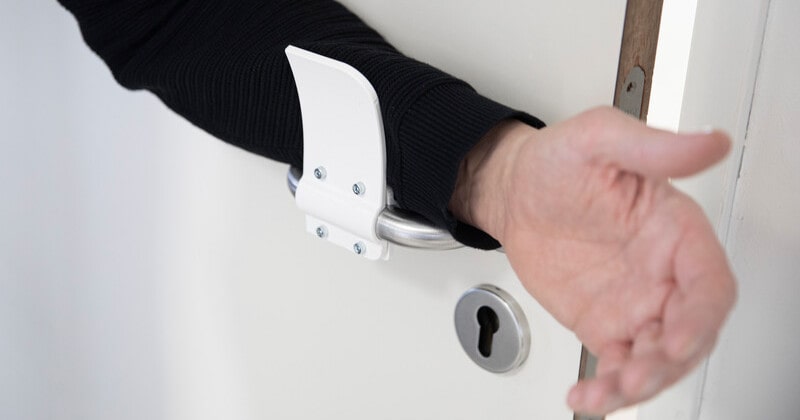
Another important point, which is often overlooked, is the centerpieces.
Salt, pepper, olive oil, napkin holders and decorative items on the table are not necessary when reopening. Therefore, the ideal is for the staff to give these items to the customer only when requested and, immediately after collecting them, to sanitize them properly.
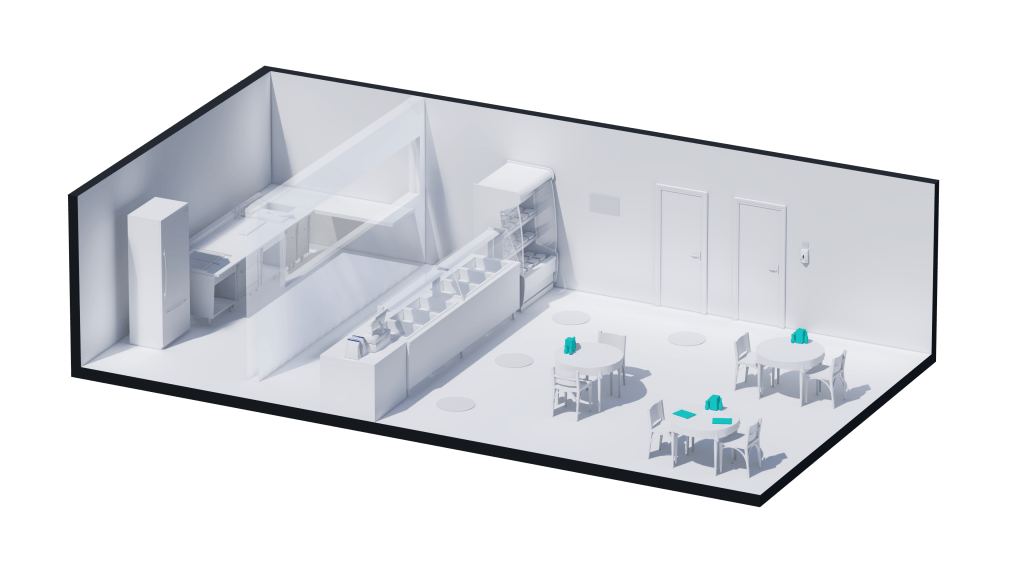
Likewise for menus: if you can't update menus for digital media, replace them with plasticized items that can be washed with alcohol after handling. Payment can also be considered a critical point of contamination. With so many technologies at our disposal, foodservice can choose fully digital means of payment and encourage the use of proximity cards that avoid touching the machine keys.
Investment in Visual Communication for Reopening
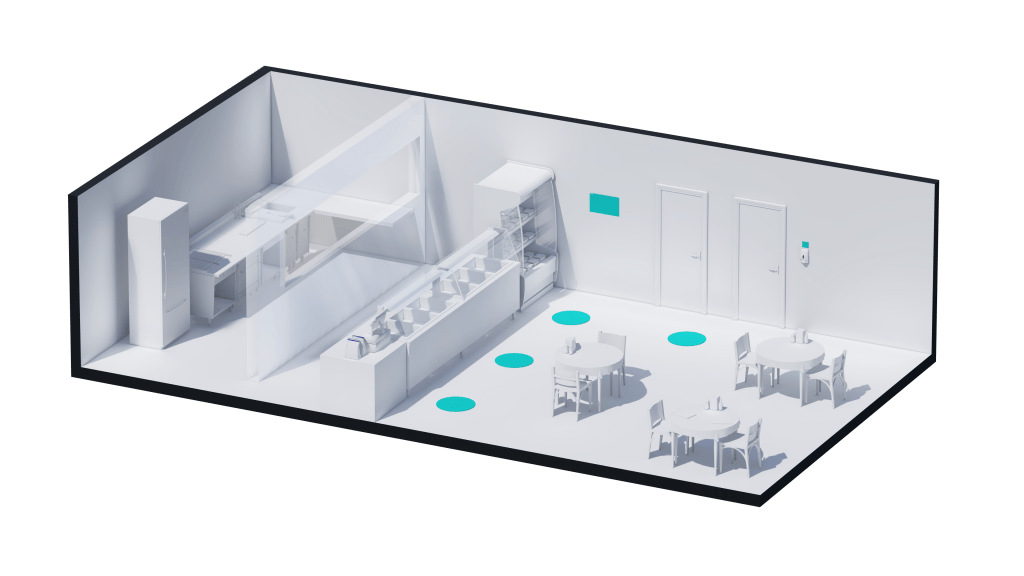
New habits and systems require a customer education service, you need to inform them of the changes and new flows.
For this, it is essential to have high-quality visual communication that indicates in your space which sanitizing points are used, the minimum distance between customers, the mandatory use of masks and any other measures taken.
We recommend hiring specialists who will assess the best place and way to communicate these changes.
Foodservice Team Training
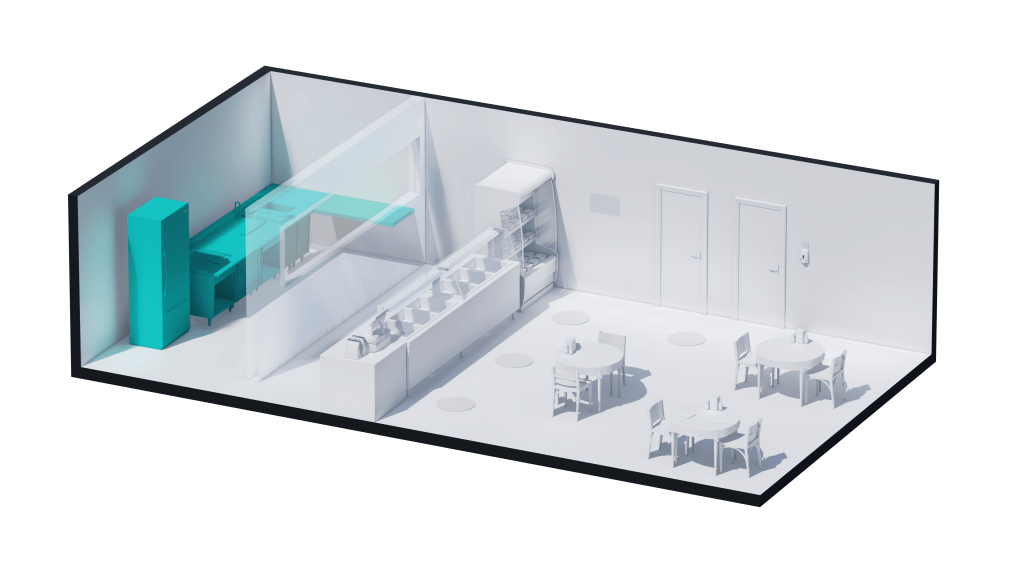
More than ever, your service team needs to be aligned and well trained. In the preparation area, known as BOH (back of house), hygienic operating procedures have always been very important to avoid contamination of the food being prepared. What could change is that each cook has their own cutlery kit. This is a way of avoiding the exchange of kitchen items between employees.
However, the salon area (front of house) needs more attention. All cleaning procedures need to be standardized and incorporated as part of this new routine
Staff must ensure that customers behave appropriately and know how to maintain the ideal distance between tables. And staff must know how to position themselves when serving customers, avoiding close contact and unnecessary touching.
Priority must also be given to customers in the risk group. They should be attended to more quickly in order to reduce the time they spend in the store.
In general, the most important thing is to remain cautious during this first moment of reopening. Remember that employees in risk groups should be spared work whenever possible or placed in a position that reduces their contact with other people.
Reopening will not be good for everyone and the danger of contamination will be great until we have a vaccine. You need to take preventive measures so that your space is not a point of contagion for either your customers or your staff.
Bruna Correa is an architect and urban planner from UFG, passionate about the world of gastronomy and a postgraduate student in Retail Design at IED São Paulo.
Mariana Hsuan She is an architect and urban planner from UFG and a postgraduate student in Strategic Design at UFG.
Photo: Mike Petrucci on Unsplash
From ego to empathy
As a young designer you may have heard this phrase a lot. But what does it mean? As someone who is pretty empathetic and self-critical, I never felt like it applied to me. But in retrospect, I think that's because most people use "ego" to describe inflated self-importance, when it's really just a word that describes how we understand our personal identity.
The distinction is important because letting go of your ego can be a nuanced practice in empathy. It's not just advice for arrogant jerks, it's essential for anyone working professionally. As a designer, my thoughts, tastes and keystrokes obviously are part of the equation, but it took some time to figure out that I could not create work in a silo as a reflection of my "aesthetic."
To some of you this might sound like a bummer, but when you take on a client's challenges and their point of view, you will have to think differently. You will find new approaches and you will grow. But more on that later.
"As a young designer you may have heard this phrase a lot. But what does it mean? As someone who is pretty empathetic and self-critical, I never felt like it applied to me."
Ernst Neufert in "The art of architectural design".

OK, but what does this have to do with my brand?
As a young designer you may have heard this phrase a lot. But what does it mean? As someone who is pretty empathetic and self-critical, I never felt like it applied to me. But in retrospect, I think that's because most people use "ego" to describe inflated self-importance, when it's really just a word that describes how we understand our personal identity.

As a young designer you may have heard this phrase a lot. But what does it mean? As someone who is pretty empathetic and self-critical, I never felt like it applied to me. But in retrospect, I think that's because most people use "ego" to describe inflated self-importance, when it's really just a word that describes how we understand our personal identity.
From ego to empathy

As a young designer you may have heard this phrase a lot. But what does it mean? As someone who is pretty empathetic and self-critical, I never felt like it applied to me. But in retrospect, I think that's because most people use "ego" to describe inflated self-importance, when it's really just a word that describes how we understand our personal identity.
The distinction is important because letting go of your ego can be a nuanced practice in empathy. It's not just advice for arrogant jerks, it's essential for anyone working professionally. As a designer, my thoughts, tastes and keystrokes obviously are part of the equation, but it took some time to figure out that I could not create work in a silo as a reflection of my "aesthetic."
Famous last words
As a young designer you may have heard this phrase a lot. But what does it mean? As someone who is pretty empathetic and self-critical, I never felt like it applied to me. But in retrospect, I think that's because most people use "ego" to describe inflated self-importance, when it's really just a word that describes how we understand our personal identity.
Hope this answers some of your questions, Dmitro.
- Author's name
